The prelude to the worldwide Christian revival resounds
The History of Redemption seminar in Los Angeles
Several years after the Azusa (Street) Revival, Rev. William Seymour prophesied that there would be an outpouring of God’s Spirit and His Shekinah Glory greater and more far reaching than what was experienced at Azusa within 100 years. It will cover the entire world.
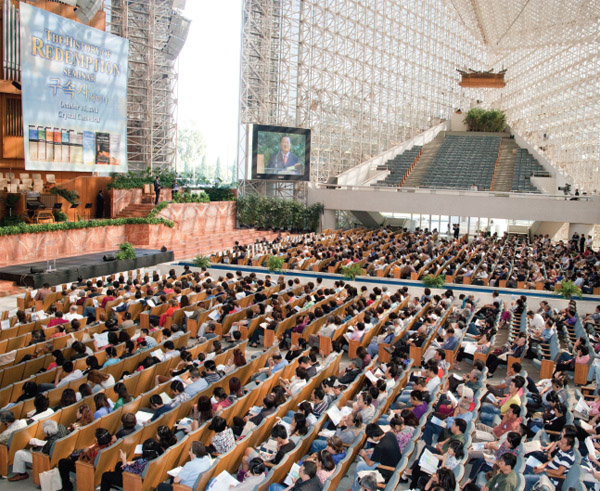
The channel of “The 100-year old prophecy” was “the Azusa (Street) Revival” in America. “On April 9, 1906, an amazing fire of Holy Spirit was lit on the second floor of the building, 312 Azusa Street, California, U.S.A., the Holy Spirit descended where Rev. William Seymour, who was from an African American slave family, and fewer than 10 believers representing various nations, ethnicity, and denominations were praying together.
While they were praying and praising from 10 a.m. until midnight, they started to speak in tongues, had changes in their hearts, and were healed of diseases. They could not resist preaching about the Lord. Changes in their hearts led to changes in their lives, and which was followed by changes in their society. African Americans and Caucasian Americans praised the Lord together.
This news quickly spread all over the country, and many people gathered. Receiving the Holy Spirit together, they all went back to each of their hometowns and started the Holy Spirit Revival. Pentecostal movements began to spread in California, Chicago, New York, Georgia, Florida, and etc. This Holy Spirit Revival eventually spread all throughout the world, going from the U.S.A. to Canada, Norway, Sweden, Germany, and etc. It influenced the Pyeongyang Great Revival that took place in Chosun in 1907 in as well” (Compiled news on the Azusa Revival from different sources, including articles from Korean newspapers and Wikipedia).
The Azusa Street Revival that was lit up by Rev. William Seymour was a great event that became a sensational turning point in the modern Christian history. As the Revival was so powerful and its impact was so clear, it is often quoted as “the greatest Holy Spirit Revival.” In 2006, in celebration of the 100th anniversary of the Azusa Revival, Christians across the world gathered in Los Angeles and wished for another Revival.
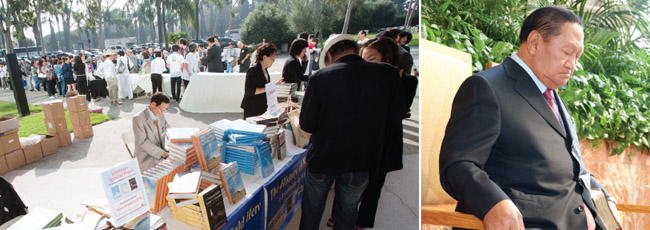
A reporter of the L.A. Times, in his interview with a Korean newspaper, expressed his hope that the prophecy of Rev. William Seymour would come true, adding, “100 years ago, my newspaper reported that the Azusa assembly hit the society just like an earthquake. I’d like to write, ‘Once again, the blazing storm of the Holy Spirit hit the U.S. in the 21st century.’”
However, when it turned to 2011, this prophecy of the ‘100 years’ rather became a subject of controversy due to its prescription period. The Wikipedia writes, “The Revival lasted from 1906 and approximately till 1915.” However, it considered the year when Rev. Seymour spoke of the prophecy as 1910. A hundred years later, when the year 2010 had passed, some parts of the Christian society in the U.S. started the movement to disregard the prophecies that delude the world and deceive people.
Some internet sites state, “O sheep, what we are following is God’s Word, not a prophecy!” They urged people, “Do not be swayed by experience or prophecy; they are not the Word of God.” The prophecy that “There will be a great revival which will spread throughout the world within 100 years” started to wither.
In the morning of Oct 15, 2011, at the Crystal Cathedral in Orange County, California, when pipe organ made its grand sound, acclamations of amazement burst out here and there. The visitors who captured unexpected scenes moved their hands faster to their camcorders. Cameras were all directed to the center of the stage where the pipe organ was being played.
The Crystal Cathedral is a well-known tourist attraction just for its pipe organ. Some Korean internet sites introduce it as the world’s largest size organ. However, when asked about its ranking, the organist answered, “It is the 6th largest pipe organ ever made in the world, and the 5th largest among the currently used ones.” The praising statements about the organ, such as “It has 16,000 pipes and 300 ranks,” can be beyond one’s understanding due to a lack of knowledge on music, but it did not outweigh the power of the solemn and grand sound of the instrument.
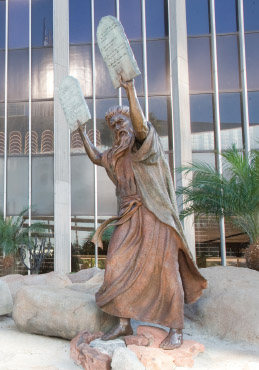
For the visitors who merely intended to look around the interior of the cathedral, it was rather serendipity to listen to the sound of the precious pipe organ. This was made possible because of the History of the Redemption Seminar. The organ player, who was invited for the praise at the seminar, was in the middle of tuning the organ. In addition to that, the visitors received another gift on that day. It was “The History of Redemption Seminar” that was captured by cameras. While taking pictures of the interior of the cathedral with more than 10,000 square glasses pasted to the building and the honeycomb-shaped ceilings with a structure of the building standing without pillars, it was impossible not to include the mega-size placard of the History of Redemption Seminar that was hung in the center of the stage. The pipe organ keyboard was also right under the placard. Due to the composition of the cameras, it was more difficult not to have the placard in the screen.
Finally it was 10 a.m., when the seminar was about to start. The large sanctuary that was seemingly impossible to fill was almost full on the first floor in no time as a crowd of people poured in. Being in the area of the world’s famous metropolitan city, the attendees were more diverse than at the seminar in Orlando, Florida, where the same event was held earlier.
In Orlando, Korean and English languages were enough for the audience to understand the lecture. Here in the L.A. area, the lectures had to be interpreted into four different languages other than the Korean that was spoken by the lecturer. After the first lecture by the author, Rev. Abraham Park, an ad-hoc interpretation booth had to be set up, due to the complaints of Chinese attendees. They said, “We were expecting Chinese interpretation, but there is only Mandarin interpretation.” Therefore, the Cantonese interpretation was added.

Either because of such language issue, or because the venue was so large with many people, initially the event seemed distracting. In the meantime, visitors kept taking pictures, coming in and out of the building. However, in a little while, the History of Redemption seminar was quickly capturing the eyes and ears of the attendees.
A young Chinese man wearing a headset was frowning all over his face throughout the seminar. When I got closer to him, I found him looking hard into the years of generations in the Genesis 5, which was printed on the brochure of the seminar. Although the seminar already moved on to different subject, he was still into calculating the years of generations. A middle-aged man, who suddenly left his seat in the middle of the lecture, came back after purchasing The Genesis Genealogies and browsed through it in his seat.
Among the visitors, some even sat down and listened for a while and showed interest in the book, asking what the book was about. A middle-aged woman changed her headset several times as the signal reception was not clear although the seminar was almost over.
A piece of note delivered to the hosts after the seminar was over was a typical example of one’s concentration in the seminar. It was written by a Chinese elderly. In his English note-of which the handwriting seemed more suitable for Chinese language than English-he wrote, “According to the lecture, the Matthean genealogy was composed of three sets of 14 generations. But one of them has only 13 generations. Tell me what is wrong.” The Chinese elderly found that “King David” and “David” were overlapping, by counting it himself on the spot. The hosts who received the note was merely impressed and said “impressive!”
Speaking of paying a close attention, we cannot exclude the Indonesian attendees. Nearly 100 of them were keeping their front row seats all day long. Quite a lot of them were wearing headsets. Probably because of their eagerness, they were given a special treat. Dr. Phillip Lee, who had given lectures in the seminar several times in Indonesia, said a few things in the Indonesian language during the last lecture.
Particularly when he suggested that the verb “menyeberangi,” in Indonesian language, which means “to cross (the river, etc)” contained Hebrew word of “eber,” meaning “to cross the river,” there were many “wows”, from the Indonesian congregation. In hindsight, they were pastors and ministers from a large Indonesian church of about 1,500 members in Southern California.
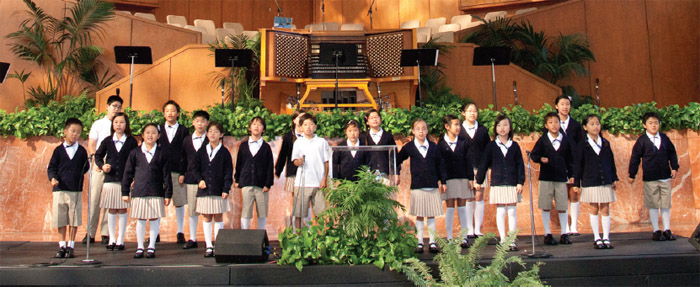
Such eagerness of the Indonesian congregation provided us with food for thought in many ways. Above all, it made us realize what one Korean theologian had once said: “The fact that the History of Redemption series is written in Korean language is a heavenly blessing for Koreans.” Certainly, it is not easy for anyone to keep the headset on for four sessions of 40-minute lecture from 10 a.m. to 4 p.m.
It is surely a privilege to be able to listen to the lecture without such effort. Koreans who understood English were able to hear the message in two languages. Rev. Andrew Pak’s precise and clear interpretation had been often praised by Americans and made the audience feel like they were watching a film with subtitles. Would the Koreans who had the privilege to hear the lectures so clearly through the original language be able to understand what those who do not understand Korean have to go through to listen to the lectures?
During the seminar period, the fourth English book in the History of Redemption series was published in Singapore was delivered to the seminar venue. The American pastors and ministers from American churches were indescribably overjoyed to receive the books. I could not but feel rather sorry that I was among the privileged Korean readers who are expecting to read the 7th book in the series soon.
In that regard, the first History of Redemption seminar held in California had some regretful aspects. It seemed that the number of Korean attendees was so meager. Out of the 1,500 total attendees, Koreans accounted for only about one third of it. It appeared to be the result of the “opposition and obstruction” by certain parties. As we heard, some eagerly spoke out against the seminar, saying, “Let us not receive the History of Redemption books or listen to the explanations on them!” before the seminar. It is merely a pity.
The premise of this day’s seminar is “the History of Redemption series.” Is it not the book labeled with “the first time revealed in the world history”? It is easy and clear to judge whether the book is good or evil. Which attitude is the right one: the attitude of the Chinese elderly who left the note after calculating the years of generations on his own or the attitude of the people saying “let us close our ears and not listen to the explanations”?

Pastors and ministers from the Indonesian church in California brought their congregation to meet the author of the book because they were blessed by reading the books while some Korean churches prohibited their congregation from attending the seminar. Some Indonesian church members, upon hearing that the History of Redemption seminar was causing a huge sensation in their homeland, came and listened to the lectures even with the handicap of having to listen to the lecture through a translation set. Contrarily, some Korean churches rejected hearing about the Word and refused to enjoy their privilege of being able to understand Korean.
The History of Redemption seminars never end as a one-time event, whether they are in Korea or overseas. It always led to invitations to invitations, resulting in spreading the Gospel around the entire globe. Since the first seminar in U.S. held in December 2010 in Florida, small and large seminars were held in more than 10 regions across the U.S. and finally reached California.
This time, again, after the seminar was over, an Indonesian church made an invitation, requesting to have the seminar held at their church in Southern California and a seminary in San Jose, California. In Korea, there have been several rounds of seminars for ministers already, and it has been long since the weekly courses on the books-“The History of Redemption Academy for Ministers”-has been opened subsequently. More than 10 ministers from Israel have visited Korea to listen to the lectures. They are now translating the History of Redemption series into Hebrew language.
It has been four years since the Korean version of The Genesis Genealogies, the first of the series, has been published in October, 2007. The work of spreading God’s Word through these books is speeding up as the readers voluntarily share the books with their friends, acquaintances, and coworkers just as the ones who were at the Azusa Street Revival 100 years ago started the Holy Spirit Movement upon returning to their homes and workplaces, which eventually blossomed into a worldwide revival movement.
Reporter by Ji-woon Lee
Description of the photo of the Azusa Street
It took me a good half-day to find the Azusa Street. The confusion began when I was headed to the outskirts of the northeastern part of L.A., where there was quite a large neighborhood with the same name. When I found the 312 Azusa Street at last, I saw a sign that says, “Azusa (Kidney) Dialysis Center.” I eagerly took pictures of it anyway, and interviewed an old man, who said, “I haven’t heard of such name since I had moved here in 1954.” Another neighbor who was painting the nearby church told the similar story. However, it struck me when I heard, “Who knows, maybe there is another neighborhood with the same name?”
The Azusa Street was located in the old downtown of L.A. It adjoins the Little Tokyo, which is a Japanese town. Next to the Japanese Culture Center, there was a sign of historical remains which read, “The cradle of the global advent of the Holy Spirit.” Although it was called Azusa “Street,” it was as short as mere 80 steps long, which makes it rather embarrassing to call it a street. Presumably, it must have gone through several urban redevelopments during the past 100 years. Considering that, it is amazing that this short ally remains as a “street” in our navigation system. It may be because it is a historical place. Behind the sign are the L.A. City Hall and the L.A. Times building.
Photograph by Ik-joon Kim
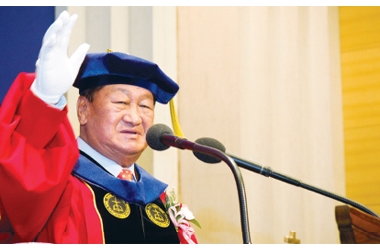 [News] The History of Redemption series is a result of world-...
[News] The History of Redemption series is a result of world-...
